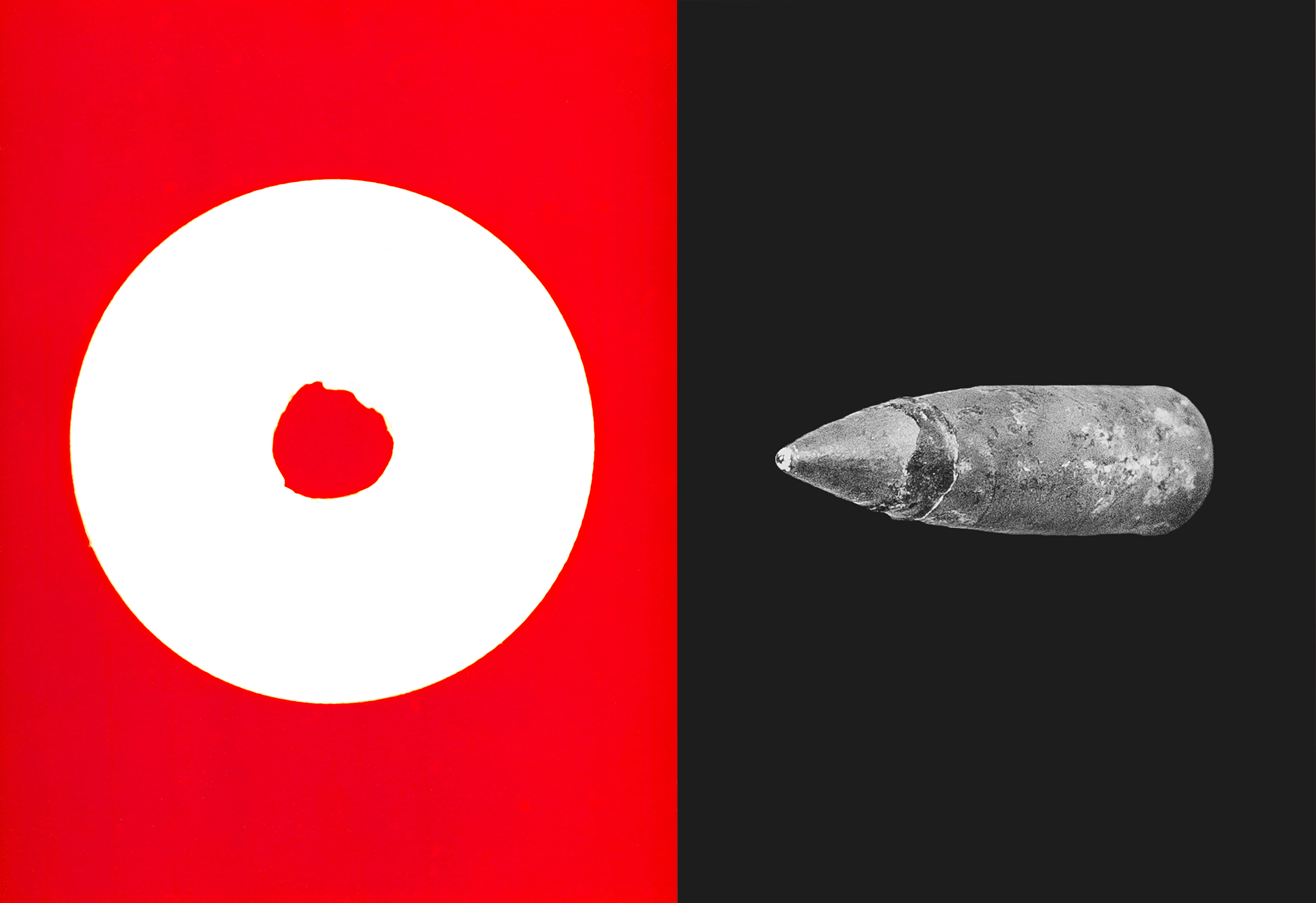Photograms, Bullets
2021




Mishap or foreordination?
Objects with no apparent photographic agency now exist within the pages of a photographic publication and are revered for nothing but their photographic agency. How can an object, without any light-sensitive properties, without any of the correct combination of chemicals become a photographic object?
The answer lies in the potentiality of a moment. Does a photograph only exist at the time of its conception? Does it exist before this moment, just as it exists after? A moment was frozen in time; not by silver chloride, silver bromide and silver iodide - but by the collision of a bullet and a coin. For the sake of argument, does this little dance between metals not hold the same agency as the process of exposing a photograph? Are these ‘ready-made’ photographs?
Perhaps a simpler way of looking at this would be to understand them through Harold Edgerton. These objects are photographs, in the complete opposite way that Edgerton’s 1964 ‘Bullet through Apple’ is a photograph. His image froze an interaction between two objects via the camera, whilst these bullets stuck in coins freeze a moment in time without the use of a lens.
Through this investigation for Hapax, I started to question the status of these objects, to look for the source of action and picture its aftermath, to understand movement through stillness. With an enlarger, the hole and every crevice that a bullet created in each coin has been illuminated onto photographic paper. In the darkroom, the coin became the camera and the light travelling through was the bullet. The impact hole that the bullet made has now been made visible as a photogram, the deconstruction of this serendipitous object and of this moment in time.
On these pages, the object has been distilled and broken down into two parts. On the left is a photogram of the coin and its impact hole and on the right, the bullet itself, free from the coin. Each object is now no longer married to the other. As the pages of the publication turn, the bullet and the coin can meet again.
These images represent a deconstruction, a distillation - my attempt to find the absolute, the perfect in these objects. The violent beauty of their stillness.